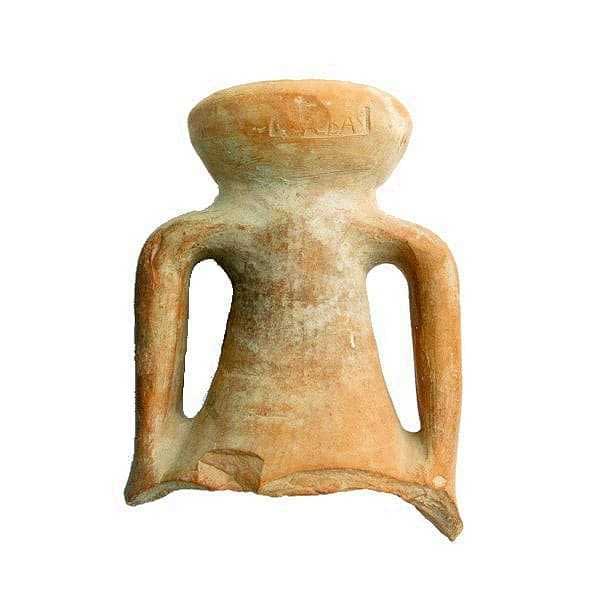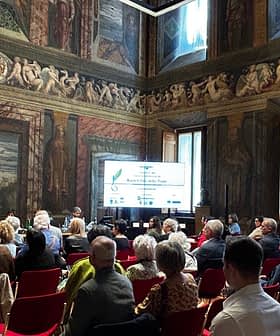Pottery Shards in Croatia Reveal Roman Olive Oil and Military History
When describing what is now modern-day Croatia, Cassius Dio said the people cultivated nearly no olives produced no wine. Today, Croatia excels in both, thanks largely to the Roman occupation.
In 2008 archaeologists in Osijek, eastern Croatia, excavated Mursa, an early Roman settlement. More than a decade later, scholars continue to glean information from the artifacts they uncovered.
Recent papers examining shards of imported olive oil amphorae, large ceramic vessels, provide new insights into olive oil’s importance to Rome – and Rome’s importance to Croatia’s olive oil industry.
When describing Octavian’s 31 BCE conquest of Pannonia (modern-day Croatia), the Roman statesman and historian Cassius Dio said the people cultivated no olives and produced no wine “except to a very slight extent and a wretched quality at that.” Today, Croatia excels in both, thanks mainly to the Roman occupation.
See Also:Discovery of 9th Century Soap Factory in Israel Sheds Light on Ancient TradeThe Great Illyrian Revolt (6 to 9 CE) soon challenged Octavian’s conquest of Pannonia. At one point, the rebels reached within 10 days march of Rome. Alarmed by their success, the Romans stationed one of their largest provincial armies in Pannonia after pacifying the region.

Tamás Bezeczky
Rome’s occupying army helped keep Pannonia in order. It also defended the Danube, which marked the Empire’s northern border against the ever-restless Germanic tribes. But armies need supplies. And for Roman supply officers, few items were more important than olive oil.
In the days before soap, soldiers cleaned themselves by covering their bodies with oil and then scraping it off along with oil-soluble grime. While many auxiliary soldiers came from cultures that used animal fats, Roman units traditionally requisitioned olive oil for cooking. But pottery shards show that first-century Roman soldiers were importing their olive oil.
The Roman Army used operational bases with reliable access to waterways to gather and ship supplies to soldiers in the field. The bases were equipped with ports, docks and warehouses. Located on the Drava River, Mursa was well suited to receive shipments.
Mursa received dried dates and figs from Spain and North Africa. They received amphorae full of garum and fermented fish sauce. But the large number of amphorae shaped in what archaeologists call the Dressel 6B style shows that their olive oil came from Roman estates on the Istrian peninsula.
Today Istria is divided between Croatia, Slovenia, and Italy, but was a region within the Roman Province of Italia in the first century. Rome had occupied the peninsula for centuries and planted many olive groves that were now well-established.

Cres (Croatia)
Noblemen with close ties to the imperial family owned many of these groves, and so it is not surprising that Istria cornered the olive oil market during the period. But while those noblemen lined their pockets during the early occupation, they were left out in the cold when Nero was overthrown, and Vespasian took over their olive estates in the name of imperial security.
The earliest Dressel 6B shards are found only south of the Drava since, at that time, Mursa marked the Pannonian frontier. Shards dated from the mid-first century appear at Roman sites up to the Danube, showing Roman consolidation of power in the region.
Istria was not always able to keep up with legionary demands. From the second century onward, archaeologists have discovered many amphorae shards that originated not in Istria but the southern Spanish province of Baetia. To meet that demand, Roman supply officials planted olive groves in the area of Pannonia they called Dalmatia.
They did not introduce olives – late Bronze Age Croatian digs have revealed olive pits in several locations, and a 2,500-year-old olive tree on the Island of Hvar predates Roman occupation by several centuries. But they introduced wide-scale olive production, and today Dalmatia competes with Istria in the production of some of the world’s highest quality olive oils.
- Open Archaeology
- Romanian Academy Institute of Archaeology and History of Art: Cluj-Napoca
- Romanian Academy Institute of Archaeology and History of Art: Cluj-Napoca








